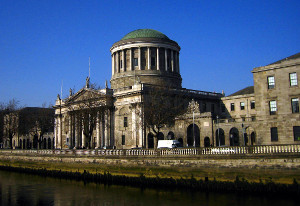High Court: Defamation claim for links to Hutch/Kinahan feud struck out in part

The High Court has struck out part of a defamation claim which was brought by a plaintiff against the Irish Daily Star and centred on the Hutch/Kinahan gang feud. The plaintiff alleged that the Star had defamed her by reporting that she was asked to help the Kinahan gang kill her partner or face being killed herself.
The Star denied that the article was defamatory and brought a motion seeking to strike out various defamatory meanings of the article from the plaintiff’s statement of claim. Delivering judgment in the case, Mr Justice Cian Ferriter decided to strike out some, but not all, of the plaintiff’s defamatory allegations.
Background
In April 2016, the Star published an article relating to the feud between the Hutch gang and the Kinahan gang, which contained the headline “Kinahans: we’ll kill 15 more.” The article focused on potential targets in the ongoing feud. One of the identified targets was Keith Murtagh, who supposedly was the intended target in the murder of Martin O’Rourke.
The article stated that Keith Murtagh was on the “hit list” of the Kinahans and identified Murtagh as a Hutch associate. The article also contained a section which stated that “the Kinahans have now threatened a woman who fled Ireland over her relationship with one of the men on their hit list. She was contacted while she was outside Europe and told she had to help the Kinahans kill her partner – or she would be killed herself.”
Arising from these statements in the article, the plaintiff issued defamation proceedings against the Star in June 2016. The plaintiff alleged that she was identifiable as the woman referred to in the article, even though she was not named.
The plaintiff claimed to have been in a relationship with Murtagh and had been living in Australia. However, she said the article was false where it stated that she had fled the country, been asked to assist in killing her partner or threatened by the Kinahan gang.
The plaintiff alleged that the statements were defamatory because she was inter alia, identified as a criminal, had links to gangland criminals, was amenable to being approached about the murder of her partner and was a gangland criminal herself.
The plaintiff claimed that she was badly affected by the publication, stating that she was in fear for her life. Further, she said that her friends and relatives had shunned her due to the alleged links to criminals.
In defending the proceedings, the Star denied that the article was defamatory. It was said that the plaintiff was not identified or identifiable in the article but, even if she was, the words did not convey a defamatory meaning.
The Star subsequently brought an application to strike out each of the defamatory meanings as alleged by the plaintiff, apart from the allegation that she was involved or linked to gangland criminals. The application was made pursuant to section 14(1)(a) of the Defamation Act 2009.
High Court
Mr Justice Ferriter began by outlining the applicable legal principles to an application under section 14 of the 2009 Act. The court considered Gilchrist v. Sunday Newspapers Ltd & Ors [2017] 2 IR 714, where it was held that a court should not seek to determine the meaning of the published words. Rather, the court should “seek to delimit the outside boundaries of the possible range of meanings that might be ascribed thereto by the reasonable reader.”
Further, the court accepted that it should not strike out a pleaded defamatory meaning unless satisfied that it would be wholly unreasonable to attribute libellous meaning to those words.
Applying the law to the present case, the court held that the plaintiff’s allegations could be grouped into two separate categories. The first category related to suggestions that the plaintiff was involved or linked to criminal gangs, or alternatively, had close links to criminal gangs. The court held that these meanings should be allowed to stand as pleaded.
It was “just about” within the limits of the range of possible defamatory meanings to say that the article suggested the plaintiff was involved in serious criminal activity or was a criminal herself, the court held. The court said that it was open to a reasonable reader to consider that the plaintiff’s potential ties to gangland criminals made her complicit in criminal activity to a degree.
In this regard, the court held that it was relevant that there were readers who would know that she was in a relationship with Murtagh and that she had been living in Australia. At this point in the proceedings, it could not be said that the meanings in this first category were wholly unreasonable.
However, the court held that the second category of meanings should be struck out. These meanings included that the plaintiff 1) was a gangland criminal or involved in the feud, 2) was amenable to an approach by criminals to carry out murder, 3) was someone with the propensity to carry out crimes such as murder and 4) was associated with gangs to the extent that they actually asked her to commit murder.
The court held that none of these meanings could be reasonably within the range of possible meanings contained in the article. Accordingly, the court held that these meanings would be struck out.
Conclusion
The court held that, if the matter proceeded to trial, the plaintiff could only pursue the meanings that 1) the plaintiff was a criminal, 2) the plaintiff was involved in serious criminal activity, 3) the plaintiff was involved or linked to gangland criminals and 4) the plaintiff has close ties with criminal gangs.







